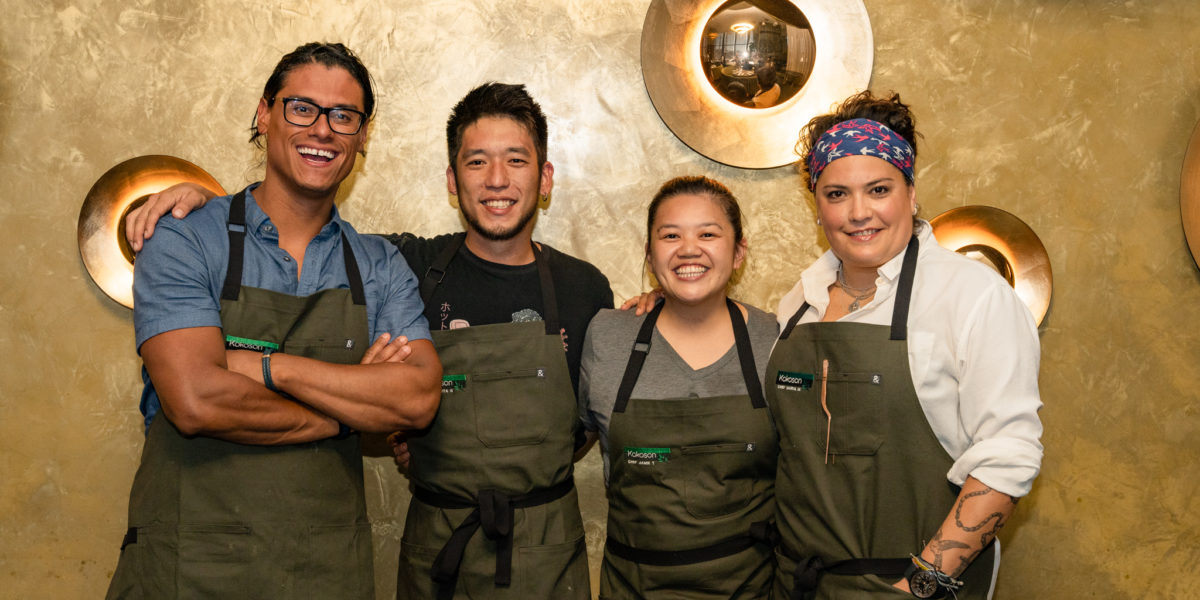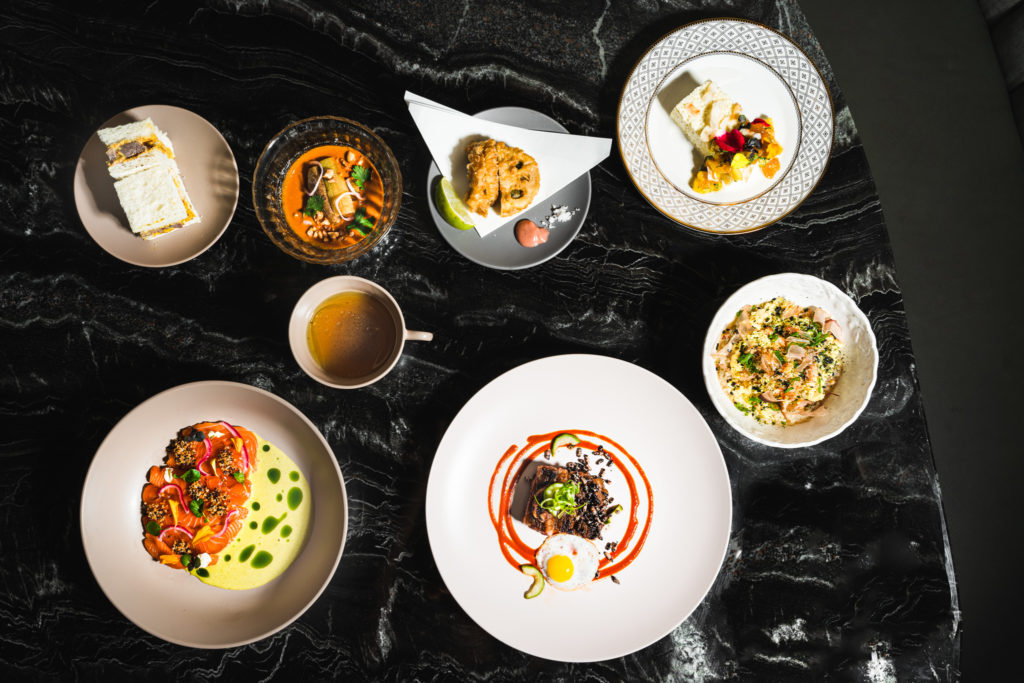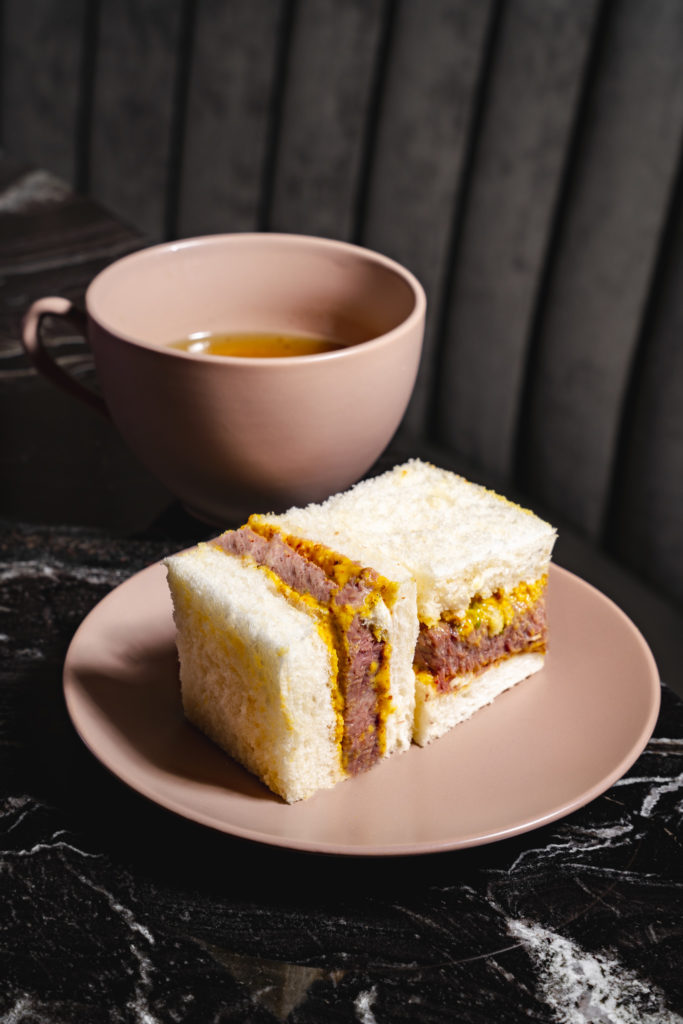
How 4 ‘Top Chef’ Contestants Re-Created Restaurant Wars With Combined Cuisines
Shota Nakajima, Jamie Tran, Maria Mazon, and Byron Gomez came together to create an eight-course dinner menu at Animae in San Diego.

I pinched myself as I walked into Animae and was escorted to a chartreuse velvet booth with an ocean view. As I took my seat at chef Brian Malarkey’s San Diego steakhouse, a glass of both red and white wine in front of me, I realized I was about to dine like a patron in a Top Chef episode of “Restaurant Wars.”
On the competition cooking show, this infamous episode is when the remaining contestants team up to conceptualize and execute an entire restaurant in two days before serving a dining room full of patrons in their newly designed spaces. The team with the best service wins and is given immunity.
Four veteran chefs from 2021’s season 18 of Top Chef came together this past weekend in San Diego to re-create their—spoiler alert—winning eight-course menu from a restaurant they called “Kokoson,” their own combination of the word “heart” in both Japanese and Spanish. All four chefs—Shota Nakajima (Taku, Seattle), Jamie Tran (Black Sheep, Las Vegas), James Beard semi-finalist Maria Mazon (BOCA Tacos, Tucson), and Byron Gomez (7908 Aspen, Aspen)—live and cook in the West, and the meal highlighted their own cultural backgrounds in a mashup of traditional dishes. The episode, which aired in May, was a departure from the original format due to the pandemic. The chefs were given the same amount of time to create a chef’s table format coursed-out menu.

James Tran
Nakajima suggested the Kaiseki-style format, a traditional Japanese meal that involves courses tailored to specific food groups or dishes. “We wanted to get together and showcase what we created because I wouldn’t have changed a single thing from the menu we presented,” Shota said.
Gomez and Mazon brought in Latin flavors with dishes centered on mole sauces and a tres leches cake for dessert. Tran wove in her Vietnamese culture and influence with a short rib dish and bright green curry that took advantage of Peruvian chiles and spices. “We’re expressing the same thing but with different ingredients,” Tran tells us.
Because they missed out on the opportunity to feed their featured menu to the masses in a full-on dinner service, they decided to bring it back to the West. Tickets were on sale to the public, allowing fans (and super-fans like me) to join the feast. The event would be hosted by Shota Nakajima’s company Cooking with Friends with help from food writer and speaker Sabrina Medora. Partial proceeds were set to be donated to World Central Kitchen, José Andrés’ organization that uses the power of food to nourish communities and strengthen economies through times of crisis and beyond. “As a DACA recipient and working as an immigrant in kitchens, I choose to be open about my situation to uplift others,” Gomez said. “To be the voice of and to speak for the voiceless is a privilege and it’s time for change. Supporting people like José Andrés and his humanitarian efforts with our dinner is what matters tonight.”
To kick off the night, Malarkey, a Top Chef season four veteran and All-Stars finalist, entered the dining room with a microphone in hand. “You always want to eat what you see on television, and you get to do that right now,” Malarkey said. I pinched myself again before taking the first bite of an amuse-bouche prepared by Animae Executive Chef Tara Monsod, comprising bluefin tuna, farmers market pluots, lemon cucumber, and shoyu.

James Tran
Fast forward to the third course, which was a play on a Japanese sando with Mexican influences from Mazon. Between fresh shokupan, or Japanese milk bread, was a braised lengua topped with pickled chili mustard. “I’ve been at this for 11 years,” Mazon told the crowd, adding that she grew up eating lengua with her family. “When Top Chef gave me a platform, I needed to showcase who my people are and what the food in Sonora really is about.” The scare factor that I have faced my entire life around trying lengua, or beef tongue, dissipated as the tender meat melted in my mouth and mixed with the flavors of fresh mustard. “You usually don’t put a sandwich in course three, but you learn from mistakes and working with others and trying things and I manage my team that way now,” Nakajima said. “I congratulate mistakes.”
Each dish set in front of me blended heartfelt memories, stories, cultures, and flavors in a new way. The final course before dessert was a congee topped with dancing bonito flakes. Not a single spoonful had me thinking “breakfast for dinner” but instead contemplating how I, too, could elevate eggs and rice in a similar fashion. With an arm covered in pinches, a stomach full of handcrafted delicacies and cocktails to match, I applauded as each chef made their way into the dining room from the kitchen.
Their ability to understand one another through ingredients and ideas that may have once seemed foreign presented a dining experience that was unmatched. I never would have thought eating food I watched created on television would be oh so delicious, but I am happy to admit to being wrong on that one.
While talking to the team, they discussed future plans for another Kokoson dinner; and we have our fingers crossed that there will be more coming from the team soon. Keep up with Maria, Shota, Byron, and Jamie on social media for updates on their upcoming engagements.
